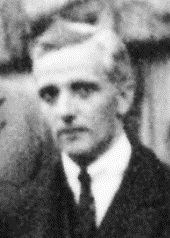Residence FranceUSA Role Physicist | Name Leon Brillouin | |
Institutions SorbonneCollege de FranceEcole Superieure d\'ElectriciteUniversity of Wisconsin–MadisonBrown UniversityHarvardIBMColumbia University Alma mater Ecole Normale SuperieureSorbonneCollege de France Died October 4, 1969, New York, United States Influenced by Albert Einstein, Hendrik Lorentz, Arnold Sommerfeld, Paul Langevin, Henri Poincare, Jean Baptiste Perrin Books Science and informatio, Wave Propagation in Periodi, Wave propagation and grou, Relativity reexamined, Scientific Uncertainty and Infor Similar People Paul Langevin, Arnold Sommerfeld, Albert Einstein, Hendrik Lorentz, Rolf Landauer | ||
L on brillouin the contribution of physics
Léon Nicolas Brillouin ([bʁilwɛ̃]; August 7, 1889 – October 4, 1969) was a French physicist. He made contributions to quantum mechanics, radio wave propagation in the atmosphere, solid state physics, and information theory.
Contents
- L on brillouin the contribution of physics
- Rmb jos teixeira laboratoire l on brillouin
- Early life
- Education
- Career
- Honors
- Books
- References
Rmb jos teixeira laboratoire l on brillouin
Early life
Brillouin was born in Sèvres, near Paris, France. His father, Marcel Brillouin, grandfather, Éleuthère Mascart, and great-grandfather, Charles Briot, were physicists as well.
Education
From 1908 to 1912, Brillouin studied physics at the École Normale Supérieure, in Paris. From 1911 he studied under Jean Perrin until he left for the Ludwig Maximilians University of Munich (LMU), in 1912. At LMU, he studied theoretical physics with Arnold Sommerfeld. Just a few months before Brillouin's arrival at LMU, Max von Laue had conducted his experiment showing X-ray diffraction in a crystal lattice. In 1913, he went back to France to study at the University of Paris and it was in this year that Niels Bohr submitted his first paper on the Bohr model of the hydrogen atom. From 1914 until 1919, during World War I, he served in the military. At the conclusion of the war, he returned to the University of Paris to continue his studies with Paul Langevin, and was awarded his Docteur ès science in 1920. Brillouin's thesis jury was composed of Langevin, Marie Curie, and Jean Perrin and his thesis topic was on the quantum theory of solids. In his thesis, he proposed an equation of state based on the atomic vibrations (phonons) that propagate through it. He also studied the propagation of monochromatic light waves and their interaction with acoustic waves, i.e., scattering of light with a frequency change, which became known as Brillouin scattering.
Career
After receipt of his doctorate, Brillouin became the scientific secretary of the reorganized Journal de Physique et le Radium. In 1932, he became associate director of the physics laboratories at the Collège de France. In 1926, Gregor Wentzel, Hendrik Kramers, and Brillouin independently developed what is known as the Wentzel–Kramers–Brillouin approximation, also known as the WKB method, classical approach, and phase integral method. In 1928, after the Institut Henri Poincaré was established, he was appointed as professor to the Chair for Theoretical Physics. During his work on the propagation of electron waves in a crystal lattice, he introduced the concept of Brillouin zones in 1930. Quantum mechanical perturbations techniques by Brillouin and by Eugene Wigner resulted in what is known as the Brillouin–Wigner formula.

Since Brillouin's study with Sommerfeld, he was interested and did pioneering work in the diffraction of electromagnetic radiation in a dispersive media. As a specialist in radio wave propagation, Brillouin was appointed Director General of the French state-run agency, Radiodiffusion Nationale about a month before war with Germany, August 1939. In May 1940, upon the collapse of France, as part of the government, he retired to Vichy. Six months later, he resigned and went to the United States.
Until 1942, Brillouin was a visiting professor at the University of Wisconsin–Madison, and then he was a professor at Brown University, in Providence, Rhode Island, until 1943. For the next two years, he was a research scientist with the National Defense Research Committee at Columbia University, working in the field of radar. From 1947 to 1949, he was professor of applied mathematics at Harvard University. During the period 1952 to 1954, he was with IBM Corporation in Poughkeepsie, New York, as well as a staff member of the IBM Watson Laboratory at Columbia University. In 1954, he became an adjunct professor at Columbia University. He lived in New York City until he died in 1969. His wife Marcelle died in 1986.
Brillouin was a founder of modern solid state physics for which he discovered, among other things, Brillouin zones. He applied information theory to physics and the design of computers and coined the concept of negentropy to demonstrate the similarity between entropy and information.
Brillouin offered a solution to the problem of Maxwell's demon. In his book, Relativity Reexamined, he called for a "painful and complete re-appraisal" of relativity theory which "is now absolutely necessary."
